-
Adopt
-
Veterinary Care
Services
Client Information
- What to Expect – Angell Boston
- Client Rights and Responsibilities
- Payments / Financial Assistance
- Pharmacy
- Client Policies
- Our Doctors
- Grief Support / Counseling
- Directions and Parking
- Helpful “How-to” Pet Care
Online Payments
Referrals
- Referral Forms/Contact
- Direct Connect
- Referring Veterinarian Portal
- Clinical Articles
- Partners in Care Newsletter
CE, Internships & Alumni Info
CE Seminar Schedule
Emergency: Boston
Emergency: Waltham
Poison Control Hotline
-
Programs & Resources
- Careers
-
Donate Now
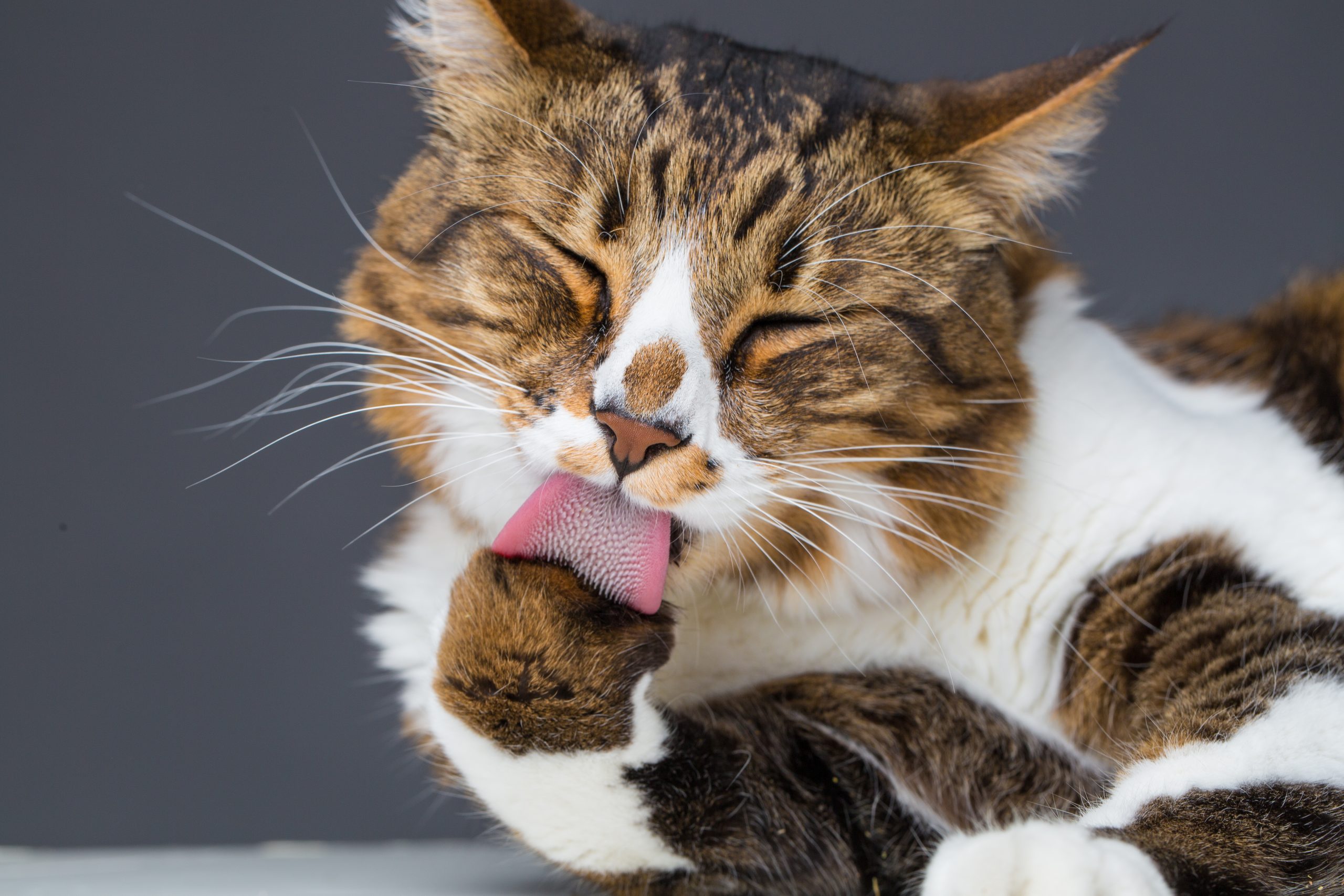 Consider a typical day in the life of your cat. She eats, naps, zoomies around the house, naps again, and meows during Zoom calls. A lot of time is spent grooming herself as well. Cats groom themselves to stay clean, but it also regulates body temperature and stimulates circulation. However, you may notice that your cat grooms too much at times. Overgrooming is a form of compulsive behavior resulting in hair loss and skin irritation. The MSPCA-Angell’s Dr. Lisa Maciorakowski in our General Medicine department tells us why cats overgroom and what you can do to help them.
Consider a typical day in the life of your cat. She eats, naps, zoomies around the house, naps again, and meows during Zoom calls. A lot of time is spent grooming herself as well. Cats groom themselves to stay clean, but it also regulates body temperature and stimulates circulation. However, you may notice that your cat grooms too much at times. Overgrooming is a form of compulsive behavior resulting in hair loss and skin irritation. The MSPCA-Angell’s Dr. Lisa Maciorakowski in our General Medicine department tells us why cats overgroom and what you can do to help them.
What causes excessive cat grooming?
According to Dr. Maciorakowski, overgrooming may have behavioral or medical causes. “Behavioral overgrooming, or ‘psychogenic alopecia,’ is a form of stress relief for many cats.” Dr. Maciorakowski cautions, however, that this is an exclusion diagnosis following the exclusion of other underlying medical conditions.
Medical causes of overgrooming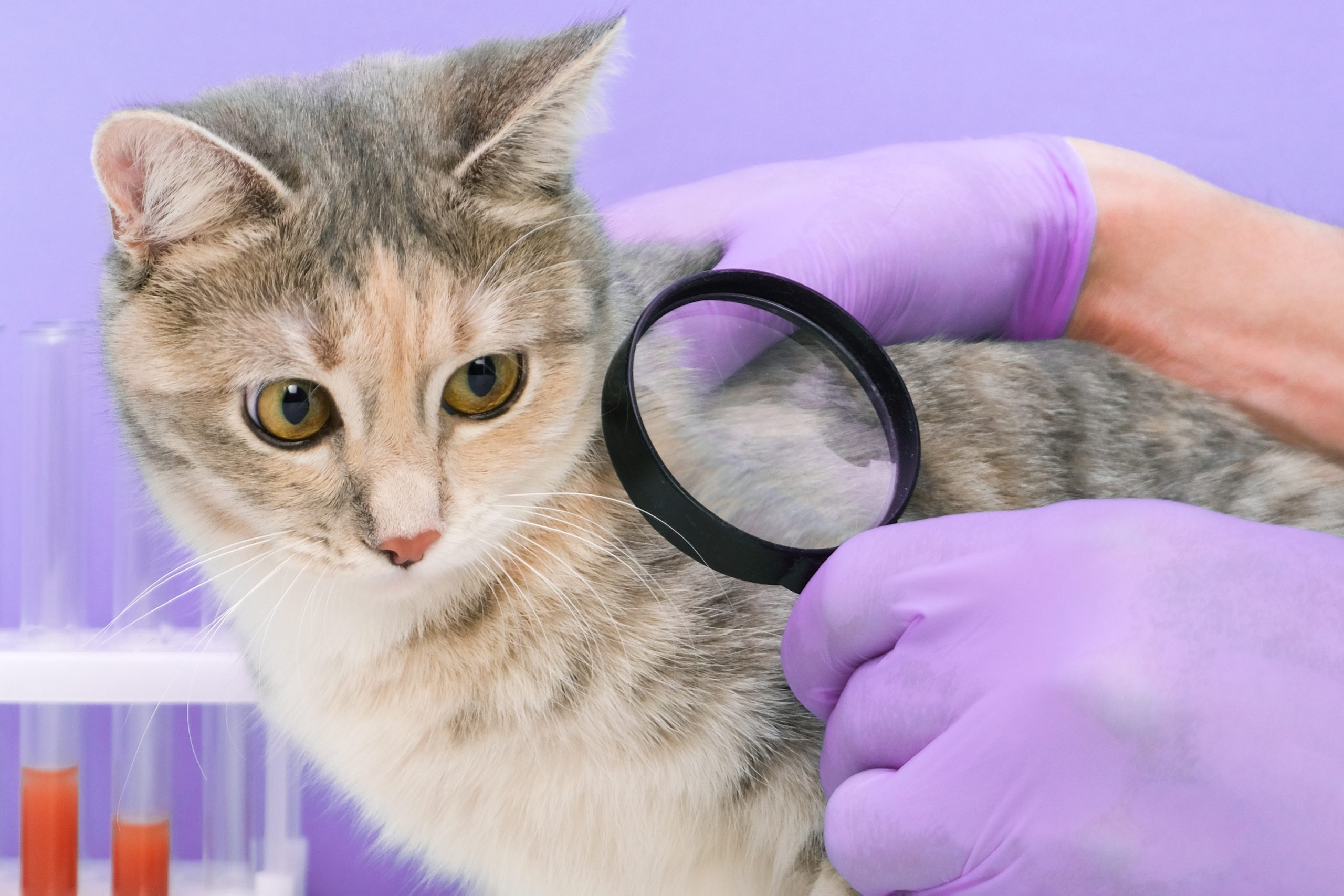
One of the most common causes of excessive grooming is an allergy. “Just like people, cats can have allergies to food, fleas, or anything else in the environment – natural or not,” said Dr. Maciorakowski. “So if your cat suddenly starts to groom more or there are patches of missing or barbered fur (where chewed hair shafts have become stubble) to suggest she is licking or plucking more, make sure you check for fleas and look for any changes in her diet history or environment.”
You should always consult your veterinarian when determining the cause of your cat’s excessive grooming. Veterinarians can help diagnose fleas, recommend flea-preventative products, and explain diet options. It may be helpful to seek the advice of a specialist as well. “Veterinary dermatologists can do allergy testing,” said Dr. Maciorakowski. “Sometimes a positive response to a trial with a steroid or anti-histamine will help support the theory that the cat has an allergy as the cause for his overgrooming.”
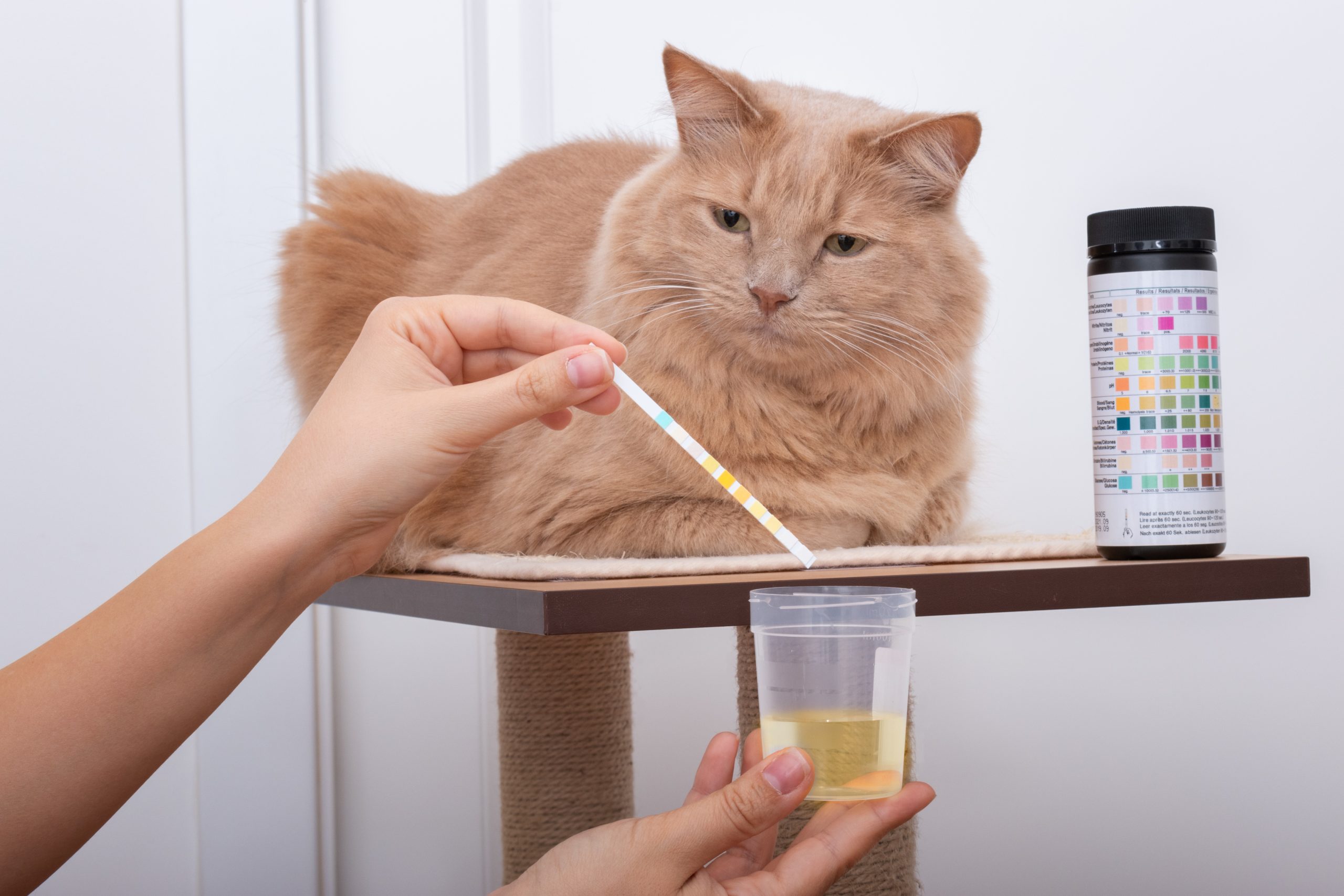 In addition to allergies, skin mites and fungus (ringworm) can cause itching. Although they are less common in indoor-only cats, they are possible. Your veterinarian can perform fungal cultures and skin scrapings to rule them out.
In addition to allergies, skin mites and fungus (ringworm) can cause itching. Although they are less common in indoor-only cats, they are possible. Your veterinarian can perform fungal cultures and skin scrapings to rule them out.
It is essential to evaluate her general health since any illness may cause stress to a cat and thus lead to overgrooming. Dr. Maciorakowski recommends a trip to your vet to rule out any metabolic causes for overgrooming, like hypothyroidism. The areas where your cat grooms should be assessed for possible discomforts, such as arthritis or bladder infections if you find her focusing on one part of her body.
Behavior causes of overgrooming
Your cat thrives on routine – she feels secure knowing she has her own space, food to eat, and safe areas to explore and play. Cats have a set routine regarding how they go about their days and often plan their day (their entire life) around you. As patterns make your cat feel safe and confident, disrupting their structured lifestyle can affect their health. Bringing a new cat into your household, a new baby, new furniture, or even moving can cause your cat stress. During times of stress, your cat may overgroom to self-soothe.
Cats release endorphins when they lick their fur, making them feel good. As a result, the more she licks, the better she feels. Excessive licking, however, can lead to hair loss. Dr. Maciorakowski explained psychogenic alopecia as a stress-related disorder. “It is an obsessive-compulsive behavior where the cats suddenly cannot stop licking or chewing at themselves.”
Unfortunately, cats are prone to “stressing out” over almost anything. Changes, no matter how subtle or obvious, are sensitive to them. “Often, we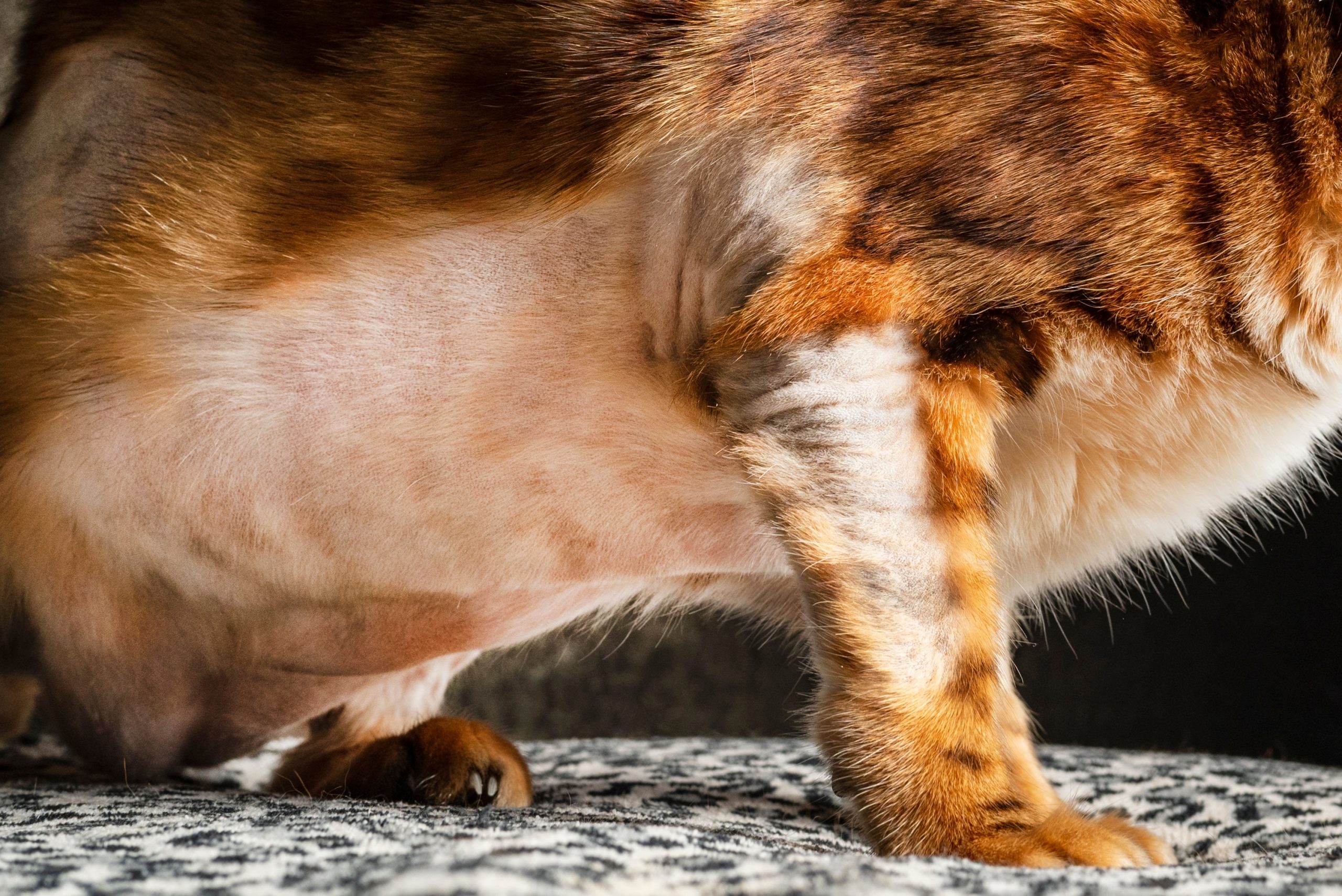 can’t even identify the stressor, and it is important to remember that stressors are different for each cat,” explained Dr. Maciorakowski. A generally chaotic or boring home might be stressful for cats with certain personalities. Sometimes, what started as grooming to self-soothe for one particular situation can develop into OCD even long after the original stressor is gone.
can’t even identify the stressor, and it is important to remember that stressors are different for each cat,” explained Dr. Maciorakowski. A generally chaotic or boring home might be stressful for cats with certain personalities. Sometimes, what started as grooming to self-soothe for one particular situation can develop into OCD even long after the original stressor is gone.
Although psychogenic alopecia can affect any cat, it is more likely to occur in cats with high-strung personalities. Cats with psychogenic alopecia often pluck out fur from their bellies, inner thighs, and down their front legs, although they can groom anywhere on their bodies. “It is important to realize that many cats do this grooming when their owners are not watching,” said Dr. Maciorakowski. “So the actual overgrooming behavior is often not noted, and you mistakenly think the cat’s fur is falling out on its own.” But if you do end up catching your cat overgrooming, don’t punish your cat, as that would only create another source of stress for her, added Dr. Maciorakowski.
How to help your overgrooming cat
Grooming is normal and natural, and some cats groom a lot — and that’s fine. As an owner, you should be concerned when grooming distracts the cat from his daily activities (e.g., eating, playing, interacting, sleeping).
“Unfortunately, there is no quick, easy solution to help ease the situation,” said Dr. Maciorakowski. “But establishing a set routine will help – when cats know what to expect, it helps keep their stress levels low.”
Below are some additional ways to ease your cat’s stress and stop her from overgrooming:
Remove the stressor (if possible)
What is stressing your cat may not always be evident to anyone but the cat, so it could take some time to figure out. Keep an eye on your cat to see how she reacts to different situations, and then go from there.
Provide plenty of environmental enrichment
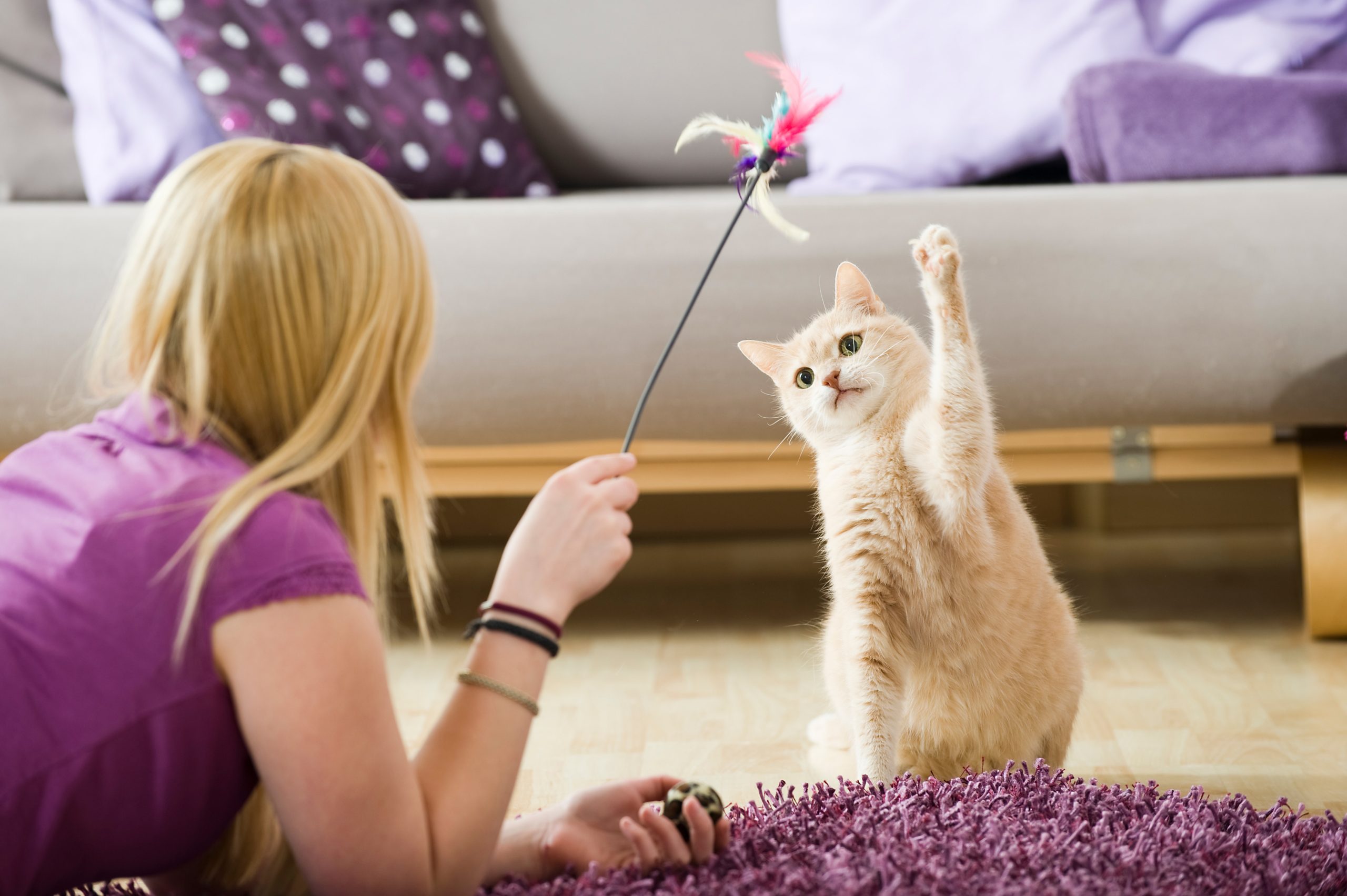 Plenty of toys, interactive playtime, and playmates can help alleviate stress (unless the playmates are causing it). Cats should also have plenty of outlets for scratching and stretching, cozy resting spots, and secret hiding spots.
Plenty of toys, interactive playtime, and playmates can help alleviate stress (unless the playmates are causing it). Cats should also have plenty of outlets for scratching and stretching, cozy resting spots, and secret hiding spots.
Calming sprays and diffusers
Synthetic pheromones, like Feliway, can be used in calming cats. The product mimics a cat’s facial pheromones to mark its territory and stay calm.
Anti-depressants and anti-anxiety medications
“Medication can be used in some extreme cases of psychogenic alopecia along with behavioral modification techniques,” said Dr. Maciorakowski. She added that the ultimate goal is to eventually wean the cat off all medications once they feel balanced at home. “And your vet will likely recommend a behaviorist for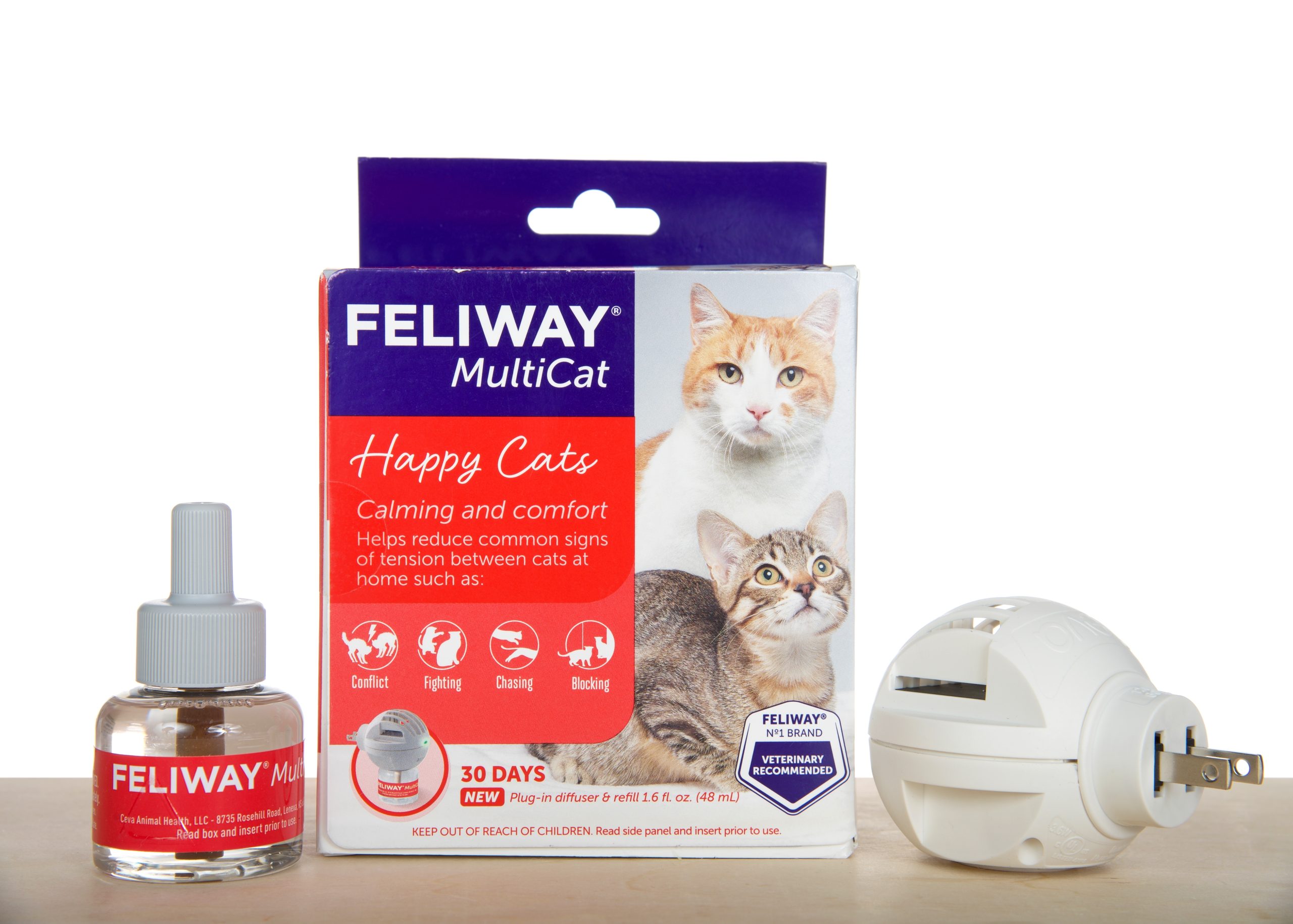 additional recommendations and specific ways to work at home.”
additional recommendations and specific ways to work at home.”
While the medical causes for overgrooming for cats can usually be wholly treated or managed, psychogenic alopecia is usually a lifelong issue. The personality of some cats will always prompt them to respond to stress by overgrooming. Their bald patches tend to come and go, and the degree to which they overgroom will wax and wane over time. For this reason, it is essential to always keep their sensitivities in mind and have ongoing thought to provide adequate environmental enrichment.




